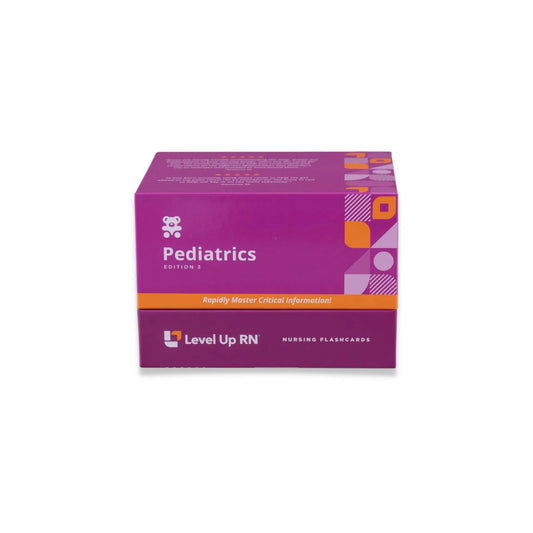Peds, part 18: Respiratory Disorders - Asthma
Updated: Cathy ParkesAsthma. The pathophysiology associated with asthma, along with asthma classifications (intermittent, mild persistent, moderate persistent, severe persistent). The risk factors, signs/symptoms, diagnosis, treatment, nursing care, and patient teaching for asthma.
Full Transcript: Peds, part 18: Respiratory Disorders - Asthma
Full Transcript: Peds, part 18: Respiratory Disorders - Asthma
Hi. I'm Cathy with Level Up RN. In this video, we are going to talk about asthma. If you have our Pediatric Nursing Flashcards, available at leveluprn.com, definitely pull those out so you can follow along with me. At the end of the video, I'm going to give you guys a little quiz to test your knowledge of some of the key points I'll be covering in this video, so definitely stay tuned for that. Asthma is a chronic inflammatory disorder of the airways that is intermittent and reversible. Triggers of asthma can include environmental allergens, cold air, smoke, or exercise, just to name a few. So one of these triggers will cause inflammation and airway hyperresponsiveness, and this, in turn, causes bronchoconstriction and the obstruction of airflow. So asthma is characterized as intermittent, mild persistent, moderate persistent, or severe persistent, and the details of each of these classifications can be found on our flashcard. So on one end of the spectrum with intermittent, the patient will have daytime symptoms less than two days a week and nighttime symptoms less than two days per month. On the other end of the spectrum with severe persistent, the patient will have continual symptoms during the day and will often have frequent nighttime symptoms as well. Risk factors associated with asthma include a family history, race. So African-Americans are at higher risk for asthma. In addition, poverty and pollution are risk factors for asthma. Signs and symptoms of asthma include wheezing, shortness of breath, cough, chest tightness, anxiety, as well as the use of accessory muscles. We would diagnose asthma using pulmonary function test. We can also perform allergy testing to help identify the trigger for the asthma.
In terms of treatment, oxygen may be necessary, and there are a variety of medications that can be used. Bronchodilators is a key medication class that is used in the treatment of asthma. We have short-acting bronchodilators, such as albuterol, which would be used for an acute asthma attack. We also have long-acting bronchodilators such as salmeterol, which would be used as a control medication. So the patient would use salmeterol on a daily basis to help prevent asthma. So salmeterol would not be used for an acute asthma attack. Other medications that can be used include inhaled corticosteroids, anticholinergic agents such as ipratropium, theophylline, as well as leukotriene modifiers such as montelukast.
In terms of nursing care, we're going to want to closely monitor the patient for status asthmaticus, which is a severe complication of asthma. It's where the patient is unresponsive to treatment, and they have a prolonged asthma attack. It is life-threatening. In addition, we're going to want to provide referrals to asthma and allergy specialists and then advise the patient on the use of a peak flow meter. So this is a device that is used to help monitor how well the patient's asthma is being controlled. So when the patient uses a peak flow meter, they're going to use it three times, and they are going to record the highest number of the three attempts, not the average. And then based on that number, the patient will be in the green zone, which means their asthma is well controlled. They may be in the yellow zone, which means that there is some airway narrowing that is occurring, and they should follow any directions that their provider gave to them, as far as next steps when they're in the yellow zone. And then if they're in the red zone, that means that severe airway narrowing may be present, and they should use their rescue inhaler and notify their doctor right away.
In terms of other nursing care items, we want to advise our patient on the use of their bronchodilators and their other medications, so making sure they understand when to use a short-acting bronchodilator and when to use a long-acting bronchodilator. We also want to advise our patient to avoid triggers whenever possible.
All right, it's quiz time. I have three questions for you. First question, what bronchodilator would be used in an acute asthma attack? The answer is albuterol, which is a short-acting bronchodilator. Question number two, what do you call an asthma exacerbation unresponsive to treatment? The answer is status asthmaticus. Question number three, when using a peak flow meter, your patient should use the average of three readings. True or false? The answer is false. They should use the highest of three readings. Okay, that's it. I hope you learned a lot from this video. Take care and good luck with studying.


